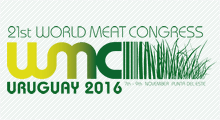.jpg)
The foundation of Montevideo by Bruno Mauricio de Zabala and the granting of “country lots” for land work in 1728 are the beginning of the rationalization of cattle slaughter, which is prohibited without prior consent of the corresponding Authority.
Esteban Ledesma took charge of the supply of meat to Montevideo in 1733 and the first departmental slaughter plant was set up in 1798 where Rondeau and Uruguay Avenues intersect today.
The first salting houses.
Given the absence of preservation methods, meat continued to be wasted at cow houses, therefore, there was an attempt to preserve it by salting it.
The first salting house was founded in 1781 on the bank of Colla stream in Colonia (nearby the city of Rosario), owned by Francisco de Medina, and in 1787, Antonio Maciel installed another salting house on the bank of Miguelete stream in Montevideo. This salting house manufactured candles, soap and jerky, the latest being exported to Cuba for the first time.
The first livestock cense in our territory was carried out in 1852, and showed the existence of 1,900,000 cattle heads, 800,000 sheep heads and 1,500,000 horses.
The first mobile butcher’s shops: carts
At that time the selling of meat to the public was done in the same carts that brought the meat from the slaughter plant, to which purposes they would park at Ciudadela square.
As to the meat quality, father Pérez Castellano was very explicit “…no more cows are killed for consumption in the city, but only steers, sixty of them every day. I am not aware that anywhere in the vast Spanish territories there is better, fatter and cheaper meat than this one..."


